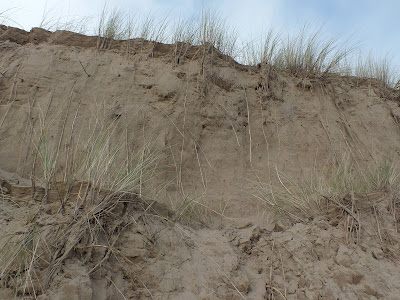Brackets.......
The Bio-diversity of the Pembrey Burrows nature reserve is huge, perhaps one of the less well studied groups are the Fungi, which are neither plants nor animals.
Dr Phillip Jones is the local expert, in the true sense, and is often out on the reserve, happy to share his knowledge and enthuse others.
This particular bracket type fungus grows on Sea buckthorn, Fomitiporia hippophaeicola
occurs on living Sea Buckthorn as a parasite and is seldom recorded with only 89 records, mainly from Lincolnshire it was first found at Pembrey in 2012, by Phillip.
 |
Fomitiporia hippophaeicola
Fomitiporia hippophaeicola
There are many more species of fungi on the reserve and I will look at them in blogs later in the year.









